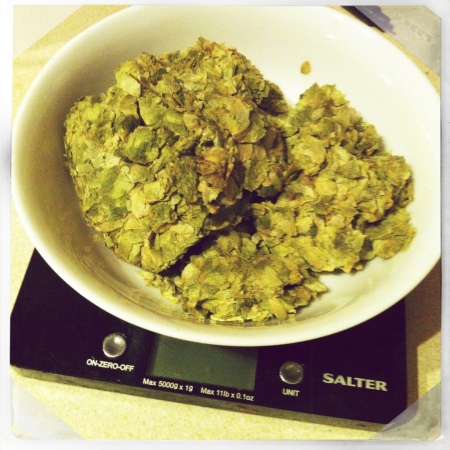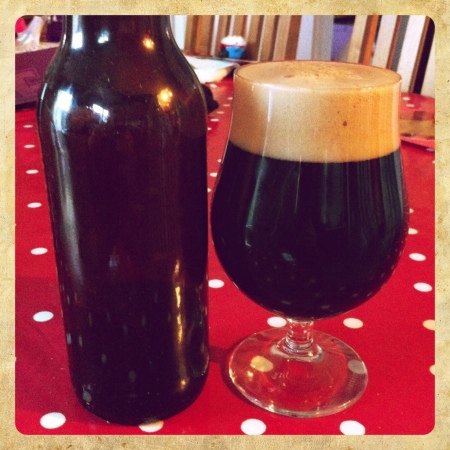This recipe has been on the cards for a long time now. It’s sort of influenced by the Brewdog Abstrakt range – high gravity beers fermented or aged with wacky ingredients. It’s got a pirate/seafaring feel to it – muscovado sugar, oak chips, star anise, so I decided to give it a name that is worthy. This will hopefully be a big stout with big flavours.
Recipe Specifications
Boil Size: 7.20 l
Post Boil Volume: 5.20 l
Batch Size (fermenter): 5.00 l
Bottling Volume: 3.50 l
Estimated OG: 1.086 SG
Estimated Color: 109.2 EBC
Estimated IBU: 65.2 IBUs
Brewhouse Efficiency: 55.00 %
Est Mash Efficiency: 55.0 %
Boil Time: 60 Minutes
Ingredients
1.900 kg Pale Malt, Maris Otter (5.9 EBC), 77.4 %
0.130 kg Chocolate Malt (886.5 EBC), 5.3 %
0.130 kg Roasted Barley (591.0 EBC), 5.3 %
0.080 kg Caramel/Crystal Malt – 40L (78.8 EBC), 3.3 %
0.080 kg Caramel/Crystal Malt – 75L (147.8 EBC), 3.3 %
0.055 kg Wheat Malt, Ger (3.9 EBC), 2.2 %
10 g Magnum [10.40 %] – Boil 60.0 min, 65.2 IBUs
0.13 Items Whirlfloc Tablet (Boil 15.0 mins)
0.080 kg Brown Sugar, Dark [Boil for 15 min], 3.3 %
1.00 Items Anise, Star (Boil 10.0 mins)
0.5 pkg Safale American (DCL/Fermentis #US-05)
15.00 g Oak Chips (Secondary 7.0 days)
Mash Schedule: Bubbles Small Batch BIAB Mash
Total Grain Weight: 2.455 kg
Saccharification Add 8.65 l of water at 77.2 C 68.0 C 60 min
01/06/2014 Brew Day – Easy peasy brew day. Smells great, serious roasty aromas.
19/06/2014 – Racked from the bucket to a demi-john and added 15g of oak chips. I want this to have a big oak flavour. I got lazy though, and didn’t sanitise the oak chips. In a beer as strong as this, I’m sure it will be okay. And as I have only 5 litres, I doubt it will last long enough to develop any off-flavours.
27/06/2014 – Bottled using carb drops. Got 8 bottles. Pretty oaky. Don’t get much anise flavour though it might develop over time. Now the long wait.
23/09/2014 – Terrific body, flavour and head retention. The only problem is that the intense oak flavour becomes overwhelming by the time you get to the end of the 500ml glass. It’s an odd beer – enjoyable yet overwhelming. Having said that, the stout flavour stands up well to the oak with plenty of roastiness and lots of balancing caramel. Bit of astringency though, which I’m not too happy with. Can’t tell whether this is due to the oak chips or the roasted grains.
02/11/2014 – This is extremely disappointing. It’s under-carbonated, but not overly so. The oaking is a little aggressive too, but not so much that it’s undrinkable. The main problem is that the level of astringency makes the beer difficult to drink. I’ve done beers with similar levels of roasted malt as this, but without the astringency. So it’s obviously something in the mash process that is dragging the astringency out of the grain. (EDIT: just done some googling, and there’s a lot of stories about the ability of oak chips to contribute astringent flavours in beer. It seems the level of oak was just too much, though I wouldn#t discount the fact that I didn’t sanitise the oak chips in a steamer this time. I’m guessing the action of the steaming draws out some of the more unpleasant and harsh flavours from the oak chips.


